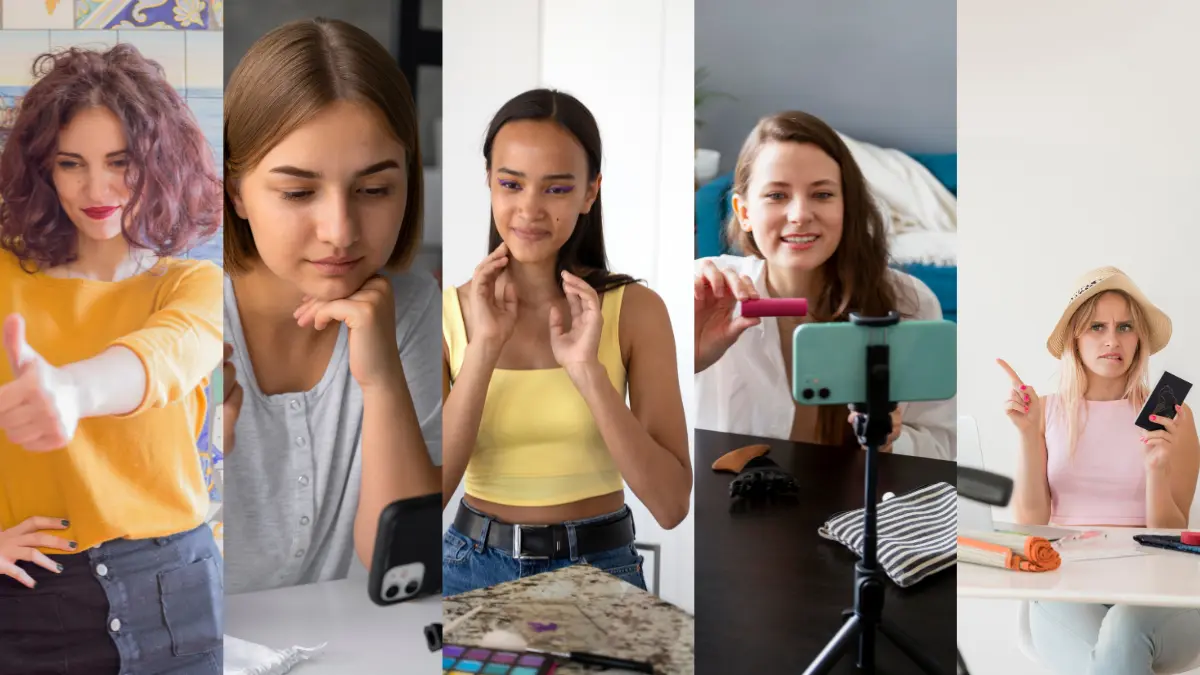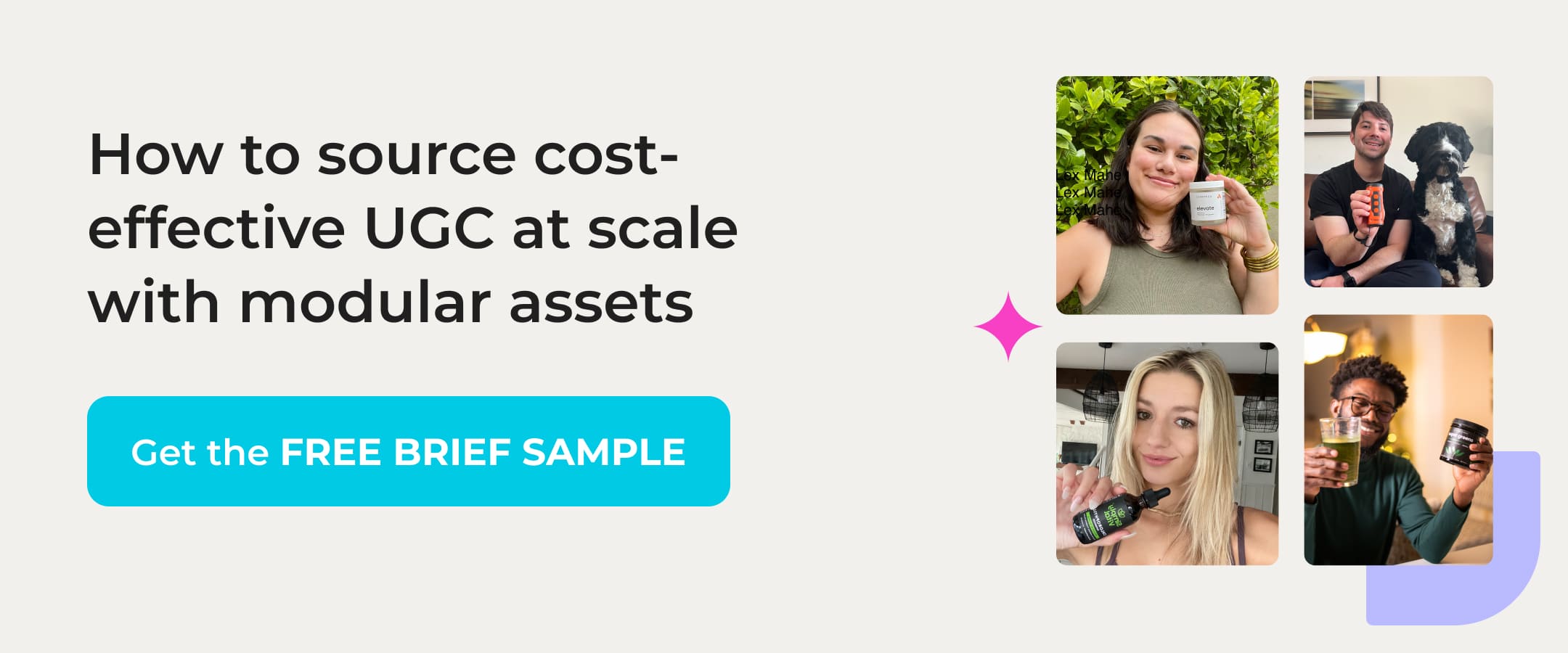While your competitors chase traditional influencer content, smart brands are quietly achieving 80% better results with authentic user-generated content.
In this guide, you'll see how industry leaders like Wonderskin, Gymshark, and Colgate transform real customer stories into sales-driving assets.
What would 80% better engagement mean for your brand?
Let's begin.
Creative User Generated Content Examples By Use Cases
Leading brands are already turning real customer voices into unstoppable momentum – from captivating videos that stop thumbs, to genuine reviews that start sales.
Inside these proven examples, you'll discover exactly how brands like yours are achieving:
- 3X higher engagement rates with authentic stories
- Natural word-of-mouth that spreads on autopilot
- Customer content that converts because it connects
Your blueprint for UGC success begins here.
Ready to see your strategy unfold?
Use Case #1: Beauty
UGC in the beauty industry generally focuses on authentic customer testimonials, tutorials, and influencer collaborations. It can help you:
- Reach new markets
- Engage potential customers
- Create attractive, high-value content
To get UGC here, you can either find creators and influencers to talk about your products or have customers share helpful reviews and how-tos.
This would give prospects genuine insight into the product performance and since the content is shared by real users, it would encourage people to try the product.
Example #1: Wonderskin
Award-winning beauty brand Wonderskin uses UGC to showcase product effectiveness through relatable tutorials.

In this TikTok UGC example, Wonderskin partners with Joana Hernández, a beauty creator with over 900k followers, to produce a tutorial video.
FYI, tutorial videos are short ‘how to’ clips that demonstrate the best ways to get things done.
In the video, Hernández shows the audience how to get the perfect smudge-free red lip.
While it’s a common challenge, she doesn’t explicitly say, “Use Wonderskin and it’s done.”
Instead, she shows how to get smudge-free red lips using Wonderskin’s product.
This is a great example of an authentic UGC strategy — offering value, showcasing the product’s quality, and making it relatable without overly promoting the brand.
Hernández’s video was able to do just that.
It’s worth mentioning that this isn’t Wonderskin's first rodeo with UGC.
Not to brag, but it collaborated with Insense to source top UGC creators for its TikTok video shopping ads.
Example #2: Blissy
Blissy is a company that creates high-quality 100% pure mulberry silk pillowcases.

Creators and influencers unboxing or showcasing a product are pretty common in Instagram feeds.
While some would say that this Instagram post is quite simple, that’s what makes it authentic and memorable — the solid, clear message that Blissy’s pillowcase is ideal for curly hair.
To make this point, Blissy collaborated with a micro-influencer with fab curly hair, Pearl, to share her experience with the product, given the importance of having a pillowcase that protects her hair while she sleeps.
Working with Insense, Blissy collaborated with 68 unique creators and ran creator licensing (whitelisted) ads using UGC from the creators themselves.
Author’s Note: Branded hashtags are pretty good at creating communities. Companies like GoPro and Apple have used this technique extensively with successful results. In this case, Blissy used branded and relevant hashtags, such as #curlyhair, to target a specific audience.
Use Case #2: Fitness
In fitness, UGC is athletes showing their audience different workout options to meet their fitness goals. It’s an average user sharing their journey on how they went from plus size to having a ripped body.
Overall, UGC allows regular people to share their stories, leading to inspiration and community connection.
Example #3: Mountain Equipment Co-op (MEC)
Mountain Equipment Co-op (MEC) is a Canadian outdoor recreation gear and clothing retailer.

This video captures the brand’s ethos of enjoying nature, making it relatable through compelling storytelling.
It shows a young family spending quality time outdoors and creating lasting memories.
It subtly encourages viewers to get out more often and enjoy nature, reminding them of what’s important.
That’s what makes this piece of UGC successful and relatable.
The audience watches the video and feels inspired to walk in nature.
In addition to inspiring viewers, the video subtly promotes the product without mentioning it — by showing the toddler wearing the brand’s Toaster Tots outfit.
What MEC did exceptionally well was include a caption or call-to-action, encouraging people to post a video of themselves wearing the brand’s product with the branded hashtag #ToasterTots for a chance to be featured on the company’s social media pages.
Example #4: Gymshark
Gymshark is a well-known British fitness apparel and accessories brand.

This video was created in partnership with a Gymshark athlete.
In it, he’s seen walking with hands two days after leg day at the gym.
For fitness buffs, it’s a funny and relatable post-workout experience.
They can emotionally connect with it because they’ve been there.
UGC like this is entertaining and appealing and invites the audience to engage.
But what else can we learn from this video?
That humor drives engagement, bringing people closer to a brand.
It’s pretty much Gymshark's influencer marketing strategy.
The brand focuses on collaborations with world-renowned creators and athletes to increase brand awareness, reach more social media accounts, and build trust with people in its e-commerce department.
Use Case #3: Consumer goods
The rise of UGC is bringing a new wave of consumer engagement and influence to the consumer goods industry.
UGC allows consumer goods companies to display authenticity and foster trust within their audience through influencer campaigns and good ol’ reviews.
This approach allows brands to strengthen connections with their audience and empower prospects to make smart purchasing decisions.
Let’s see two successful examples of how UGC is used in the consumer goods industry.
Example #5: 5 Stars United
5 Stars United is an Amazon collective with 30 different brands selling a variety of consumer goods.

One of their most successful products is the Half Moon Pillow, which UGC creator Candace Daguiarr shares an insightful video review about here.
Daguiarr highlights the pillow's unique benefits and shows prospects different ways to use it.
It’s an honest review that can help people make informed decisions — especially those needing a multi-purpose pillow.
Key takeaway: Creators and brands can use UGC to spotlight common problems and demonstrate how their products can help solve them.
Example #6: Colgate
You’re probably familiar with Colgate — a popular consumer goods company offering various oral hygiene products.
If not, welcome back to Earth.

They took a different approach in this UGC — showing people the morning routine of Instagram makeup artist Stephanie Valentine, aka Glamzilla, and how she incorporates Colgate’s Signature Optic White into the routine.
Valentine narrates why she chose Colgate and showcases the benefits of using their product.
Then, she goes to apply makeup; after all, it’s her morning routine.
This video is a good example of how UGC can use storytelling to engage the audience and build a deeper connection with the brand.
Use Case #4: Food & drink
Has the food and beverage industry missed the UGC train?
No chance! It’s at the forefront, leading the charge with the average TikTok and Instagram user sharing food reviews and influencing people’s decisions.
Everywhere you turn, someone posts a new recipe or food-related experience, presenting an opportunity for brands to connect further with their audience.
Below are two examples of how businesses in this sector are using UGC:
Example #7: Lay’s
Lay's is a crispy chip brand that’s been serving Americans for more than 75 years.

In this UGC, lifestyle creator Dez Hopkins tries Lay’s range of potato chips and reacts to the flavors in a fun, engaging way.
It’s a simple, sweet food review that spotlights the emotions the flavors evoke.
Here’s the interesting part: the video was created by a beauty and lifestyle creator rather than a food blogger.
This fresh perspective increases the chance of making the snack appealing to a diverse audience.
Key Lesson: Don’t hesitate to collaborate with creators from other niches to break into new markets — it could be the spark you need to go viral.
Example #8: Just BARE
Just BARE is a Colorado poultry company providing healthy and organic products.

In collaboration with food bloggers and creators, the brand produces unique content that showcases its product’s value.
In this UGC example, a food blogger and her kid describe the product, test it, and rate it.
The content serves as a review that builds trust with viewers, encouraging them to try Just BARE’s product.
It provides social proof of the quality and flavor of the product to folks who need convincing. It’s not the brand praising itself.
The results speak for themselves:
The video garnered over 5k views, nearly 4k likes, and 29 comments.
The bottom line is that reviews are pivotal to your growth.
Use them to build credibility and drive engagement with your audience.
Use Case #5: Fashion
UGC offers fashion brands numerous ways to engage their audience, from haul content on video-sharing platforms to unboxing videos, product reviews, and before-and-after transformations.
They can leverage UGC to influence prospects' perceptions of their brand without being too promotional. Let’s look at examples of how these brands use UGC.
Example #9: CLUSE
CLUSE is a watch and jewelry brand from Amsterdam.

They collaborated with Parvina, a UGC fashion creator with over 20k followers, to showcase a new watch collection.
The post features a simple carousel that feels like she’s promoting her outfit — and that’s the beauty of this UGC.
Viewers can see how the watch complements her clothes and might be inspired to check it out.
The setting makes the UGC even more relatable: Parvina enjoys a cup of coffee on a cold winter morning and offers viewers outfit ideas for similar outings.
In a nutshell, UGC doesn't always have to be in video formats — it can be photos, and people will still engage.
This post, for instance, got more than 3k likes and one hundred comments.
Example #10: Teddy Blake
Teddy Blake has been offering high-quality, hand-made Italian handbags since 1958.

In this Instagram post, they featured a UGC video of content creator Barbie Ari unboxing a Teddy Blake handbag.
The video got viewers interested in the bag, and a few of them asked how much it cost.
Unboxing videos are very effective because they give potential buyers a complete picture of the product's packaging and quality, and the overall experience it provides.
That brings us to the end of this guide — it’s time to wrap this up!
Transform Your Content Strategy Today
Watch your brand's authentic story unfold through the power of creator-driven content.
This journey to inspiring examples has come to an end. If you’ve made it this far, congratulations!
We’re sure you’ve got plenty of inspiration and ideas.
If you’re ready to turn those ideas into action, feel free to book a demo with Insense and find the right content creators in your niche to run innovative UGC campaigns.
See you soon!




.avif)





